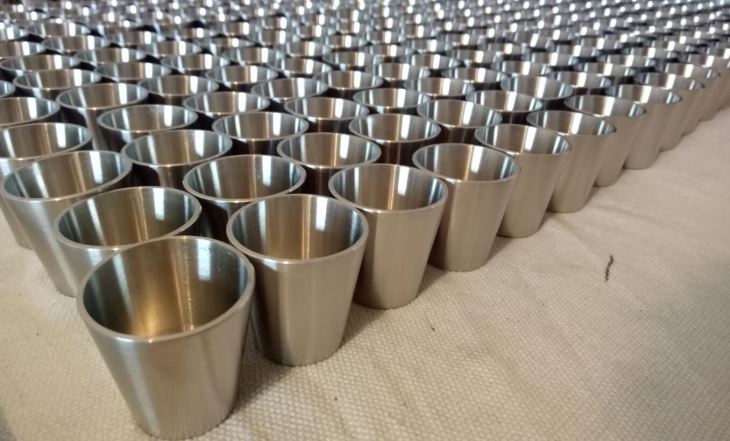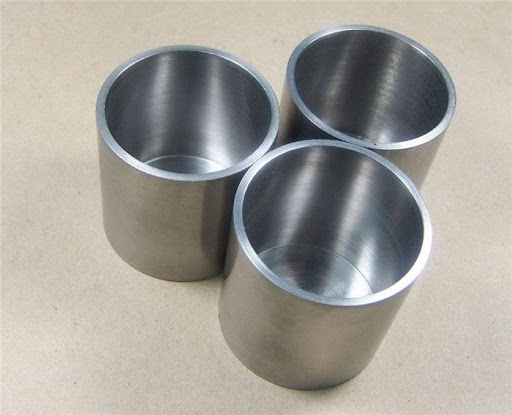Tungsten Crucibles for Rare-earth Melting Applications

Tungsten Crucibles for Rare-earth Melting Applications
Tungsten is a rare and hard chemical element, which has a high melting point, high-temperature resistance, small thermal expansion coefficient, and great permeability. Tungsten crucibles are widely used for sapphire crystal growth and rare-earth melting due to their excellent characteristics.

Tungsten Crucibles
It is reported that the rare earth products smelted with tantalum crucibles and molybdenum crucibles contain tantalum and molybdenum up to 1000 x 10-6, which not only reduces the grade of rare earth products but also has a service life of only 30-80 furnace times.
In recent years, relevant domestic institutions have trial-produced tungsten crucibles. As a result, the rare earth products after smelting contain tungsten only 1000 x 10-6, which greatly meets customer requirements. And the service life of the crucible is up to 400-500 times. It can be continuously used for 5-6 months, smelting 12 times per day.
Common problems with tungsten crucibles
Although there are many advantages of tungsten crucibles, their service life will be easily affected by improper use or incorrect processing of manufacturing. Because tungsten crucibles are relatively thin and ready to be impacted by the processing technology.

Tungsten Crucibles
At the present market, many users remark that welding and nearby parts will be more or less corroded and damaged in less than half a year. This is because of the environmental impact during welding and the lack of mastery in the selection of materials. The lack of proper heating treatment after the product is formed results in the product being endurable. Meanwhile, it causes slag to build up.
SAM Solution
In order to solve the above problems, Standford Advanced Materials (SAM) modified the following steps in the manufacturing process of tungsten crucibles.
- Oven
Oven time is around 2 hours and power is controlled within 11-14 KW.
- Melting
The beginning smelting power should be lower for the first time use, in order to avoid sharply rising temperatures causing internal and external temperature differences and cracks to occur. Handle with care when adding material so as to avoid damaging the crucible.
- Clearing
After the copper liquid is completely out of the furnace, the inner wall and bottom of the crucible, including refractory slag, will be cleaned with special tools immediately. It extends the refining speed and volume.
- Cooling
The furnace mouth will be sealed with special tools when the furnace is shut down, after melting. And the water inlet valve of the induction coil will be closed to prevent the crucible from cracking due to rapid cooling.
- Washing
Although the inner wall and bottom of the crucible will be cleaned after each use, some refractory slag will remain on the crucible wall. The more times crucibles are used, the thicker slag will be. It will affect the melting speed and output of the electric furnace after reaches a certain level, which greatly increases the casting cost.
Therefore, we found a method to remove residues. First of all, we melt a full furnace of molten iron. After the temperature of molten iron reaches 1450 - 1480 ℃, the molten iron is immediately taken out of the furnace and cleaned up. In this way, the inner wall and bottom of the crucible can be cleared completely.
Make Achievement
The furnace age of each tungsten crucible we manufacture could reach more than 400 times or even close to 500 times after employing the above measures. This not only reduces the cost of our ingredients by about 30% but also extends the life of the crucible.
Conclusion
Thank you for reading our article and we hope it can be helpful to you. If you want to know more about tungsten and other refractory metals, you can visit Advanced Refractory Metals (ARM) for more information.
Headquartered in Lake Forest, California, USA, ARM is a leading manufacturer & supplier of refractory metals across the whole world, providing customers with high-quality refractory metal products such as tungsten, molybdenum, tantalum, rhenium, titanium, and zirconium at a very competitive price.
{{item.content}}
LEVE A REPLY
{{item.children[0].content}}
{{item.content}}






